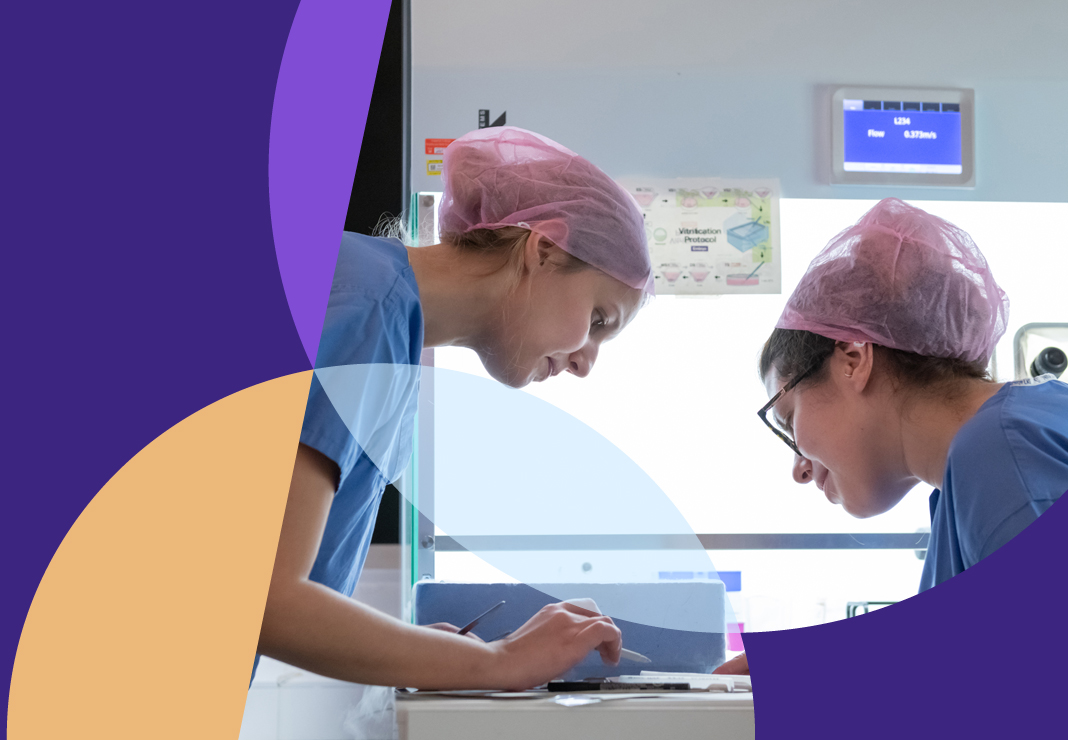
Fertility testing and investigations
About this page
- Last updated
At the Wolfson Fertility Centre, we recommend you have your first fertility tests at your GP.
These tests are available to couples and individuals with fertility concerns.
The tests you can have at your GP include:
- Follicle-stimulating hormone test (FSH)
- Oestradiol test (E2)
- Anti-Mullerian hormone test (AMH)
- Semen analysis
Before you have your first appointment with one of our consultants, there may be other tests and investigations that you and your partner will have to give us a fuller picture of your fertility. These tests and investigations assess how your womb and ovaries work and give us an idea of your ovarian reserve – or the number of eggs. For men, tests and investigations look at the number and quality of your sperm. For same-sex couples, we advise you both have these tests.
If you or your partner has had the same tests somewhere else in the last six months, we can use these results so please bring them with you to your initial consultation.
Blood tests
Depending on whether you have had initial fertility tests with your GP, these are the tests we would recommend birthing people have before they come for their first appointment with us:
LH (luteinizing hormone):
This test measures the level of luteinizing hormone in your blood and can help us understand whether your reproductive system is working as it should. The test happens on day 2-5 of a menstrual cycle.
FSH (follicle-stimulating hormone):
This test measures the levels of follicle-stimulating hormone in your blood and can help us determine your egg reserve, or the number or quality of eggs you have.
E2 (oestradiol):
This test measures the level of oestradiol in your blood and can help us understand whether your ovaries are producing the right amount of oestrogen.
AMH (Anti-Mullerian hormone):
This test checks your egg reserve. It also helps us understand which medications and in what dosage might help you best prepare for an IVF cycle.
Day 21 progesterone test:
Completed on day 21 of a menstrual cycle, this test checks progesterone levels to confirm if you have ovulated.
Thyroid function test:
This test can indicate an increased risk of fertility problems and miscarriage.
Imaging tests
Depending on the results of your initial fertility tests, we may ask you to have further investigations before or after your first consultant appointment. These investigations are designed to give us the fullest picture possible of your fertility:
Ultrasound
After your first consultation with a doctor, you may be asked to have an investigation scan. This test is an ultrasound scan to assess your uterus, ovaries and their position. The ultrasound checks for common problems like fibroids, polyps or cysts in the ovaries. During the scan your clinician will also conduct an antral follicle count (AFC), which counts the number of follicles with eggs in your ovaries. The scan is conducted using an ultrasound probe inside your vagina.
Saline sonography
A saline scan is a 3D ultrasound scan that looks at the inside of your womb and checks for polyps, fibroids or anything else that might affect your womb’s function. The scan also gives us an outline of the shape of your womb.
Hysterosalpingogram (HSG)
An HSG is an x-ray examination of your womb and fallopian tubes, which can help identify blockages or damage in the fallopian tubes. It can pinpoint fibroids, polyps and scar tissue.
Hysterosalpingo-contrast-sonography (HyCoSy)
A HyCoSy test is an ultrasound scan used to assess whether your fallopian tubes are open.
Laparoscopy (keyhole surgery)
Laparoscopy is a procedure to diagnose a range of conditions that develop in the pelvis, including endometriosis, scar tissue, fibroid and ovarian cysts. It also allows us to confirm if your fallopian tubes are open. Laparoscopy involves making a small cut in your abdomen under general anaesthetic.
Hysteroscopy
A hysteroscopy is a procedure used to examine the inside of the womb (uterus).
It’s carried out using a hysteroscope, which is a narrow telescope with a light and camera at the end. Images are sent to a monitor so your doctor or specialist nurse can see inside your womb.
The hysteroscope is passed into your womb through your vagina and cervix (entrance to the womb), which means no cuts need to be made in your skin.
The test will show if there are any abnormalities inside your uterus, such as polyps, scar tissue or fibroids, which can cause fertility problems.
Tests for men
Depending on whether you have had initial fertility tests with your GP, you will have a semen analysis test before coming for your first consultation. This test is sometimes known as the sperm count test. It looks at the quality and quantity of sperm, including:
- Number of sperm
- Shape of sperm
- Movement/motility of sperm
The results of this test are usually available within a week. If the results are abnormal, we will repeat the test three months later to ensure it is accurate.
If you are finding it difficult to become pregnant as a couple, semen analysis can help confirm if you are infertile. The analysis of the sperm will also help show if low sperm count or sperm dysfunction is the cause of the infertility.
